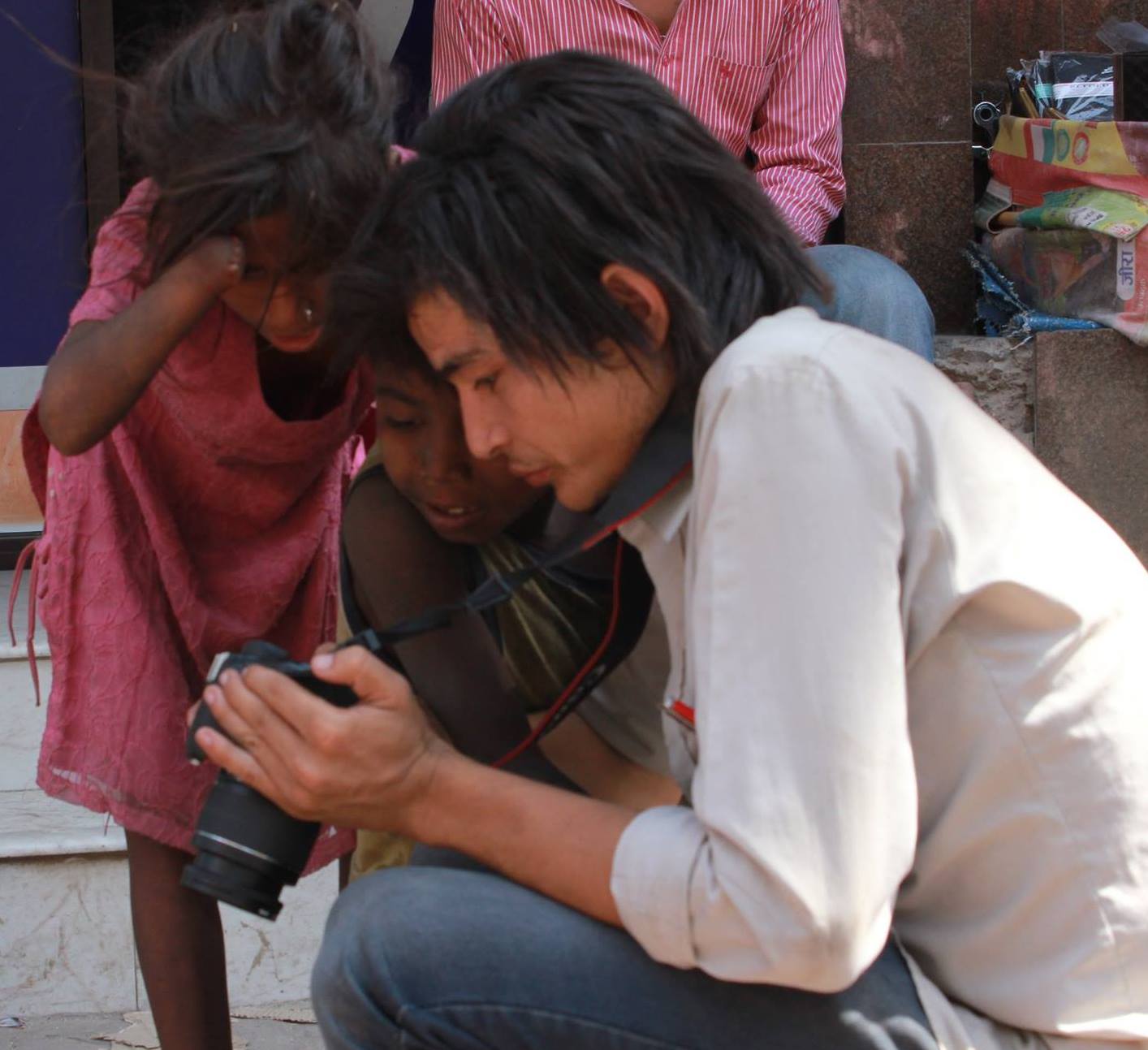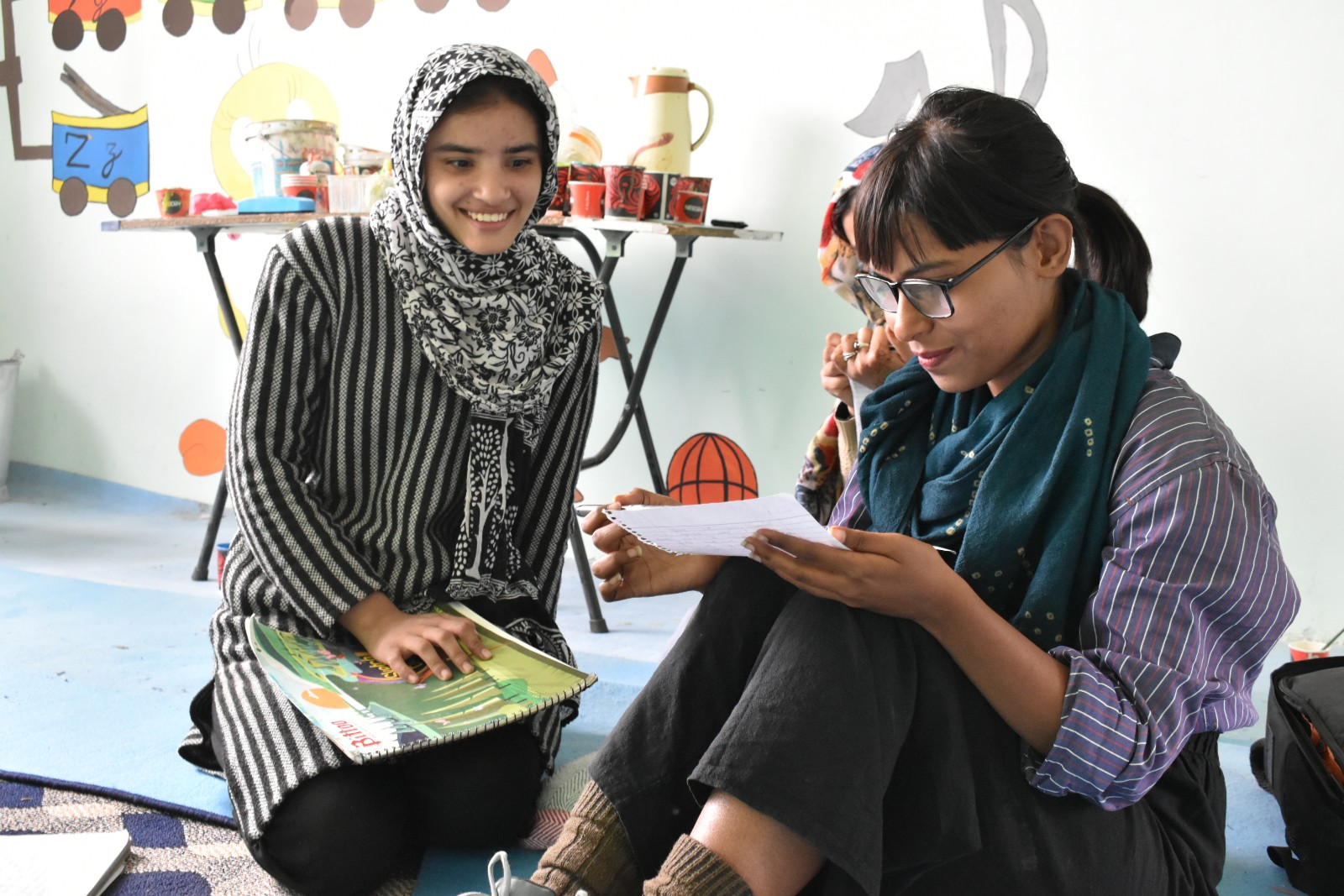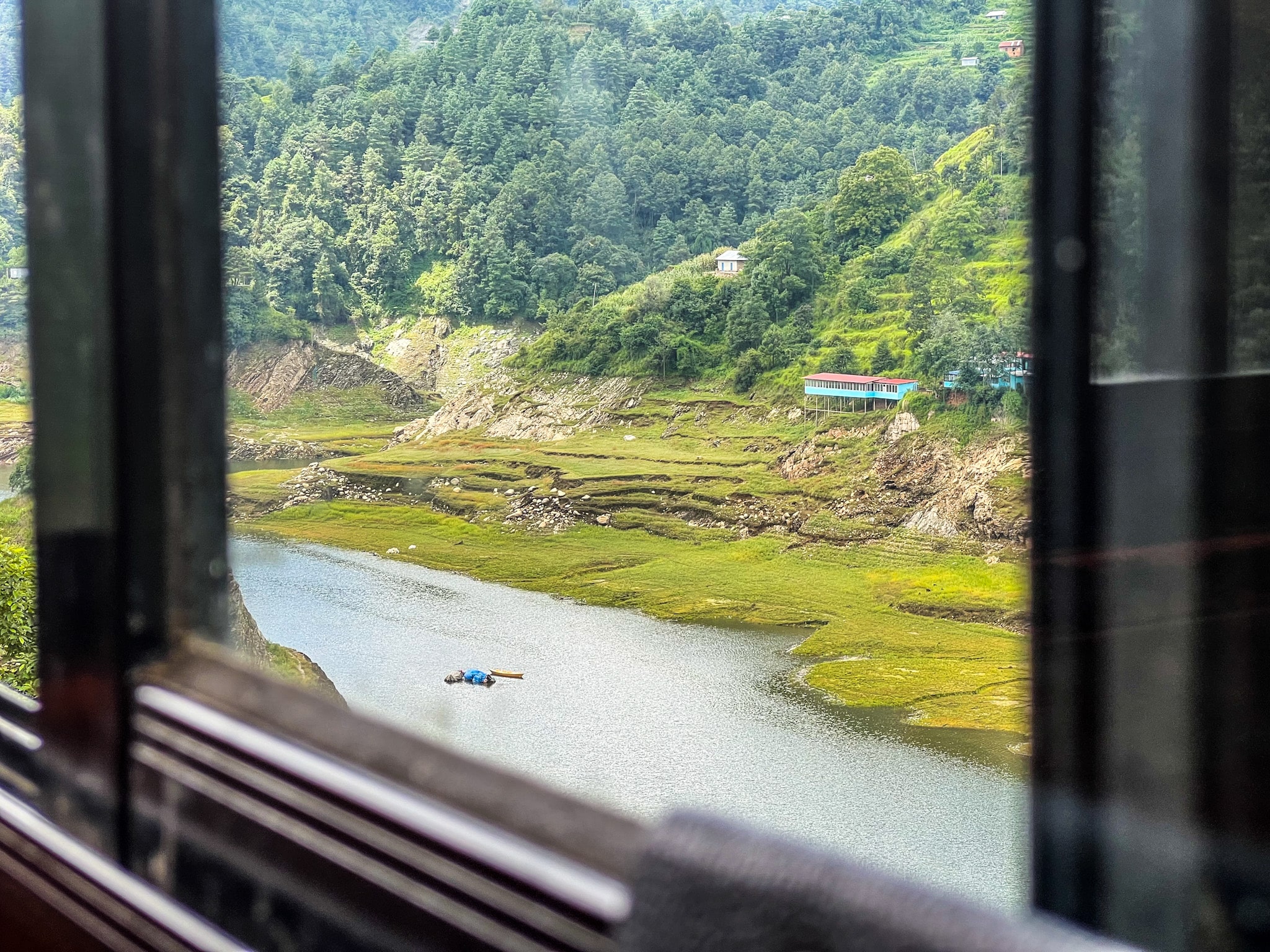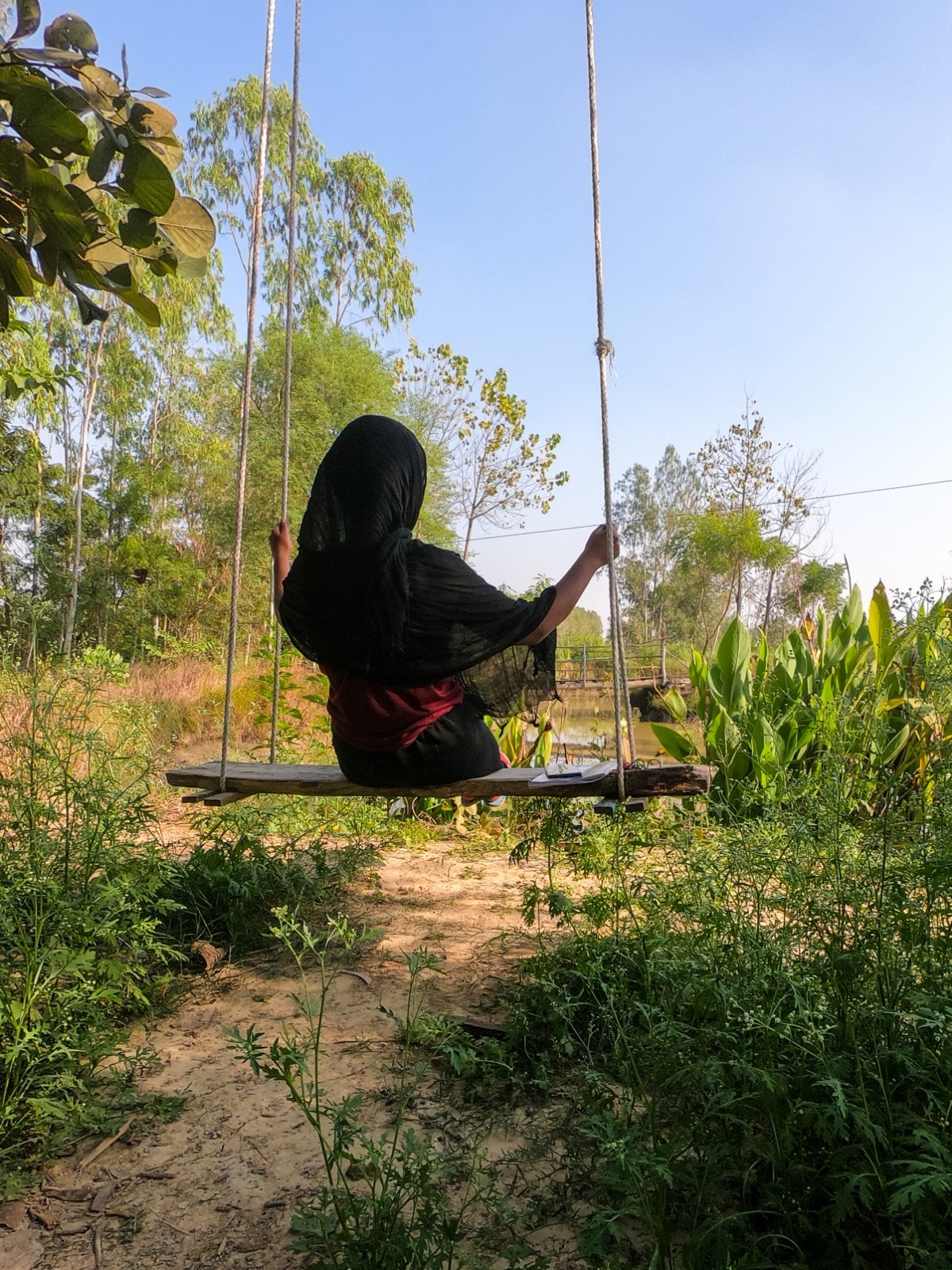As I get more and more into the understanding of the street life in Kathmandu, I meet Sushil Babu Chhetri, who started out as a street kid, and now, a filmmaker.
You don’t look for stories. Stories look for you. And such quotes are fluttering all around us, all the time. But what if I tell you neither is true? We just keep meeting each other, because we both exist, with the open possibility to co-exist. With one such open possibility, I smeared more and more into the streets of Kathmandu Nepal.
How I, out of the odds, dived right into the Kathmandu street life is a story that will follow through soon. But amid all the scoops of exposure to a new-centric pool of knowledge, I met Sushil Babu Chhetri, a filmmaker from one of the Upper Himalayan regions of Nepal, whose life bespeaks possibilities, passion, and the story of hundreds of stories.

He found himself on the streets at the age of eight, a succession of orphanages apart he mentored thousands of street children and documented them through films and photographs for more than ten years. His story is about a camera.
More resources on Sushil and his films – Letter to God (on YouTube), Khatte: The Choice of Freedom (2015), Limits of Freedom: The Street Children of Kathmandu (2017)
“It’s freedom. And every freedom has a cost, and there is no solution to that cost.”
NEPAL. You don’t want to leave Nepal, right? How do you see your Nepal?
Sushil: Nepal is so complicated! If I take you to one of the Karnali villages in Nepal, you will be shocked! Those remote villages are no younger than 300 years. If I escort you to Pokhara, it’s all so modern! Nepal is a small country, with a cultural mix of religion-induced civilizations. You cannot form your opinion upon meeting a guide. Most of the travelers run into trekking guides, and the guides give them all the despairing bullshit! Only half of the things are right!
It’s only starting now. Responsible traveling, ethical volunteering… Before I used to work for an Australian company. They would travel for a week, and the next week they would visit an orphanage, the streets of Kathmandu and take pictures… Their attitude also circled around the proud notion of ’changing’ Nepal, because that’s how they have been briefed.
Also read – An Extensive Guide to Best Places to Visit in Nepal
How were the streets of Kathmandu in the 90s? You have lived through that time in the streets…
Sushil: In the 90s, the streets had very few children. CIVIL was one of the first ones that actually started working with the street kids. They have loads of data and photographs. Before they had a shelter home also, but now they work more on advocacy and awareness. In the 90s, street life was actually more like a preface, a beginning. Most of the kids came out of their hometowns due to peer pressure, family pressure, or sometimes it was like, ‘Okay, let’s go!’ Or sometimes they would come to the streets at night, see other kids getting money easily, and get attracted to it! At that time, it was more violent, with lots of gangs, the big guys…
But is it that easy to get money on the streets?

Sushil: It’s not that easy, but if you are a young kid living on the streets of Kathmandu, it’s rather an effortless chore. Right now we have more Indian beggars, before we never had such traffic-junction-begging-fashion! Or the idea of putting down kids on the streets, while the mom sits by her side all day long!
Before in Kathmandu, two kinds of beggars would be found. One, mentally disabled, in front of temples. Temple is a religious place. Devotees stopping by to pay respects to God would also stoop by the beggars. The other kind would be the street boys with GLUE. They live on the streets of their own choice. Nepal has always been a touristic country, and tourists want to feel good. They see these little kids begging on the streets, and the whole picture is out of their standard mindset and fixed sight. For Nepalese, it’s a matter of regular encounters. The Nepalese would also give money as an act of kindness. Mostly religious people, Buddhist people…
In the 90s Kathmandu, it was also like that. If I tell you the stories of Pashupati, Bhaktapur… In Bhaktapur, they never had street kids. Somehow they managed to keep it low for a long time. But Pashupati, Basantapur, Thamel – these are all touristic hubs of Kathmandu. It was emotion… the little kids… If the older ones ask for food or money, people would snuff them off. Little kids, living on the streets, sniffing GLUE, so people would give, give, give… But that money would never be used in the right way.

Slowly the NGOs also thought it was getting hard to bring the kids to the centers. So they started going to the streets. They distributed food and provided blankets so that they wouldn’t suffer anymore on the streets. But they were suffering, they were being abused, yet they didn’t know. For them, it was a glamorous life, relishing and re-living the fantasy of freedom. While being abused, they didn’t know they were being abused.
There was a big dataset of 5000 kids living in the streets back in the day. Now the number has decreased.
In Kathmandu only?
Sushil: Yes, in all the different towns of Kathmandu. In the last couple of years, after the 2015 earthquake, and now with the condition of COVID, kids are less exposed to the street-life than before. Also because of the government, and the number 104, you can dial the number to deposit any street kid to an orphanage.
But at that time, it was the biggest game of orphanages. A lot of children were trafficked into the orphanages. Amid the chaos of the Civil War in Nepal, a trafficker would go to a village and transport the kids to Kathmandu, with the perceived proposition of studying with foreigners, and the dubious image of an AMERICA! A lot of parents would send their kids to orphanages….
So the parents would fund their kids to be in the orphanage?
Sushil: Yes, so that they can have a better life. Before the adoption business was more on the mark, then it stopped. Then they started taking money from their parents. An orphanage was designed in that way… guilt trip, you can call it… Every volunteer buys you something, and you wear that for some time, then it’s gone. Again a new volunteer comes… And he buys you a carom board, and feel good, and the carom is gone…
Also read – The India-Nepal Border Crossing by Land Via Gorakhpur
Why are the kids attracted to the streets in the first place?

Sushil: It’s freedom, and every freedom has a cost. And there is no solution to that cost. You have to deal with the general thought-process, processed with the thought that lives can be transformed by handing over food. Food, or the process of giving, is not the basic thing. You have to understand why they ended up there in the first place. And what would be the incentive for them to quit everything, willingly! The other thing that attracts them is the psyche of always running back and forth. It can be a tiny little thing or two that may not have converged well at home or the orphanage, and they can readily jump back to contemporary street life.
It’s the same with drug abusers. They go to rehab and return feeling motivated after the rehabilitation phase of no GLUE. But they again relapse, because the drug is working inside them. They are mentally equipped outside, but somewhere in the inner compartments, they cannot deal with the day-to-day problems like a day-to-day person is meant to.
When did you quit all the street life?
Sushil: I was on the streets for three years. Later on, I realized it was not more fun. When I was a kid, people would buy me food, and take me to the swimming pool and the cinema hall. It was the biggest feel-good factor. But whenever I felt alone, I would have two things in mind: I ran away from my home, I made a mistake…
How old were you when you ran away?
Sushil: Eight, I guess. I felt like I made a mistake. If I went back home in the state I got myself into, they would never accept me. I always had the soft corner that someday I have to be a good guy, to journey back to my hometown. Others were having fun with the free life on the streets, but I decided to go to an orphanage in Kathmandu. Over time I got shifted from a bad orphanage to a good one, and then the good one was so good that I realized it was not practical at all! It’s a business of guilt trip.
How did filmmaking happen to you?
Sushil: In the ’good’ orphanage home, a lot of volunteers used to come with Handycams. I was always so obsessed with cameras, I don’t know why (laughs). And I don’t even have any young photos of me! Tourists photographed me on the streets of Kathmandu, but nobody ever sent me my photos!
I was always taking pictures of kids, making them jump from here to there, breaking their hands sometimes! There was a French volunteer with a Handycam, and I would kind of become his assistant whenever he filmed. ‘We have to do this, man! Let’s do that!’ And I told him one day, ‘Let’s make a film together!’ He asked me, ‘What do you want to make?’ ‘Let’s make a documentary about us!’ That was kind of the first video. I had no idea how to operate a real camera, ‘You just press the red button’ and that was my only learning about cameras.
“We made the first short documentary about the Umbrella Foundation. It’s a documentary about how Umbrella started and how 500 kids got there. So, that was my first film, I would say.”
Also read – Volunteering/Painting in the Monsoons of Kathmandu Nepal

After that, I left the orphanage. I was tired of the same thing, the same storytelling, meeting people with a smile, something like what I am doing right now (laughs). I took the decision to get out. I told some of the teachers, ”I gotta go! I am 16 now. I can live by myself.” ”What are you going to do?” They asked me. ”I know many people in Thamel. I can work in a hotel.” I thought I could speak good English, I could find a job easily. When I was a kid in the streets, everybody gave me attention, now people are supposed to give me the same kind of attention!
One of my teachers actually gave me 2000 NPR. It was a lot of money at that time. So, I was hanging around Thamel (the hub of Kathmandu) with 2000 NPR, feeling proud. I had two options; a nice pizza, a hot shower in a nice hotel room, and finished! Or, I keep the 2000 NPR, I stay in the streets, and do other stuff. But then somehow I came across a foreigner filming something in the streets with a camera. Again it took my brain to the camera, and I decided to rent a camera from an equipment shop.
The reason to rent a camera was that I wanted to film my friends. Suddenly I met small Indian kids, who must be 7-8 years old, carrying these big plastic bags, collecting plastics. They thought I was a foreigner, ”Money! Money!” I told them in Nepali, ”Look! I have no money, but tonight we have a task. I film you, we find a white guy who will buy us food.” They agreed to the prospect. So, they started walking through the streets of Kathmandu, I started following, and we met a French guy.
He bought food for them. But he saw me with the camera, and said, ”Should I buy you or what?” ”Look, bro! I am exactly like them. One thing is different, I can talk to you.” I started telling him about my life. He was so impressed with me that he bought me food! The next morning, all day all night, and the consequent morning, I only filmed and filmed until we reached Kalimati. Then I realized that all the kids have parents, and the parents are sending them to the streets to collect plastics and meet tourists. They all are from Samastipur, India. Hundreds of them were living in tents next to the riverside.
Now my money is finished, 2000 NPR, and the camera had to be returned. So, I have two tapes in my pocket, no money, and I meet the same French guy again. He asked me, ”Where are the kids?” I said, ” I don’t know. You might see them in the evening.” He wanted to tour around Pokhara, Chitwan… I asked him, ” Can you take me as a guide?” He worked as a nurse, but he knew how to edit videos. That explained the Handycam!
We had a really good bond, so I asked him, ”Can you help me?”
He helped me to install all the footage on the laptop. Once I showed him the footage, he asked me, ”Is this your first time?” ”Yeah!” He couldn’t believe how a total novice like me could film this! I told him, ”I want to make a film! A documentary!”

Afterward, I started meeting all the kids every day, I know more and more stories. They want to go to school, but their parents are not sending them. But they are not street kids, they are not doing GLUE, but they are on the streets of Kathmandu all the time! They always get into fights with other street gangs. I started hanging out with them because I also didn’t have a room. I am also homeless, a street boy again.
After a few days, again I meet the French guy, ”Where are you staying?” ”I am on the streets again!” ”You can come to my hotel. I have two beds in my room.” ”Why not!” I was looking for an excuse every time, I needed something good.
So, he helped me print all this and make a CD. At that time, I didn’t know much about Facebook and all. I mailed the CDs to each and every volunteer I knew from my orphanage past, via the post office. Everyone started writing me back with ”We gotta help you! We will send you the money. We will put the kids in school.”
No, I am a homeless. But somehow people started sending me money, and I was like, ”What the heck! I have to do it now.” So I put 50 street kids in a school. Then it hit me, if with 2000 NPR I can put 50 kids in a school, I could do a lot more! So I put a lot of girls, because in India, particularly in Samastipur, girls get married so young! It’s not like they don’t have any money. They make more money than me, 2000-3000 NPR every day by collecting plastics. They are richer than me. They just don’t have the habit of putting them in a school.
So I kept it very simple, 50-50. I will pay only the school fees. I also told the foreigners not to send me money. Instead, to send it directly to the school, the school will send them the monthly report. It was only 2-3 dollars for one class. Initially, the one-time investment in school uniforms and books was comparatively expensive. Then it was always one dollar, two dollars… a maximum of five dollars.
But slowly trouble started to kick in. Kids stopped going to school, because their parents were sending them at night to collect plastics, they were not doing their homework, and in Nepali schools, teachers will scold you for that. Then it struck me that I have to solve this issue.
So why not open a small center and hire a tutor?
Also read – Thunderstorm at Australian Camp While Solo Camping in Nepal

So, when did you go back to your family?
Sushil: I think I was 22. I was showing my film all over Nepal. I went to my hometown with the same purpose. The district officer was kind of the king of the whole district. He was the chief guest at my film screening. He asked me where I was from. ”I am from here, but I don’t know where”. Long story short, my dad and he had worked somewhere. He is the one who found my dad!
When are you going to publish your book?
Sushil: As soon as I can. All I need is a little time to edit. Every 50 or 100 pages brings me back to different layers of the street life of Kathmandu, the adoption business, saviour complex, the ’right people’ and the ’wrong people’, and the abuse of kind hearts back in the West. My book is more like a storybook that talks to the young volunteers, the parents, the sponsors, and above all, the streets.
Lastly, how ”Modern” is Kathmandu now compared to the 90s Kathmandu you had experienced?
Sushil: It’s not like modernizing from the inside, as if you have equal respect. It’s like middle education. The plant is kind of in the middle. It’s not like we don’t know anything. It’s also not like we know enough, technically. It’s confusing. We use the internet, but we are losing our realities.
Brown rice and organic vegetables were part of our daily lives. Now, in order to be in that lifestyle, you need to be rich, even in Nepal. It is so commercialized now that only rich people can follow that lifestyle! But it was our daily life. If you go to Karnali up to my home, everyone eats red rice, the rice that grows over 3500 meters. One meal can make you feel ‘done for the day’.
And everything is getting so expensive every day in Kathmandu. After the king was gone, we lost all the factories we had. We are on the way to becoming 100-percent dependent on the outside. The whole game and the policy are to be dependent. You can live the streets, but just leave it.
How would you approach the street kids the next time? What’s your take on the situation that’s booming in Kathmandu?
Follow my solo adventures on YouTube, Instagram and Patreon.
5 responses to “Interview: Why Kids Choose to be on the Streets of Kathmandu”
-
I will wait for his book to be published. It sounds like a really good book that would raise awareness to the current situation in Kathmandu, compared to how it was some 20 to 30 years ago. Great interview!
-
This is some powerful stuff. I’ve seen videos of the children in the street in Kathmandu, and I’ve always wondered about their stories. It was amazing to get it straight from someone who lived it.
-
How amazing to hear the story directing from someone who lived it. It is always a wonder about people on the streets and their circumstances and how they survive x
-
Wow, what an amazing story! I didn’t know kids choose to live in the streets there. That seems so crazy. My boys are 7 and 9 so about the age he was when he ran away and as a mom that just completely breaks my heart!
-
I’ve been to Kathmandu a few times and as you said, kids are all over the streets. Your post is very insightful, thank you so much…




Leave a Reply